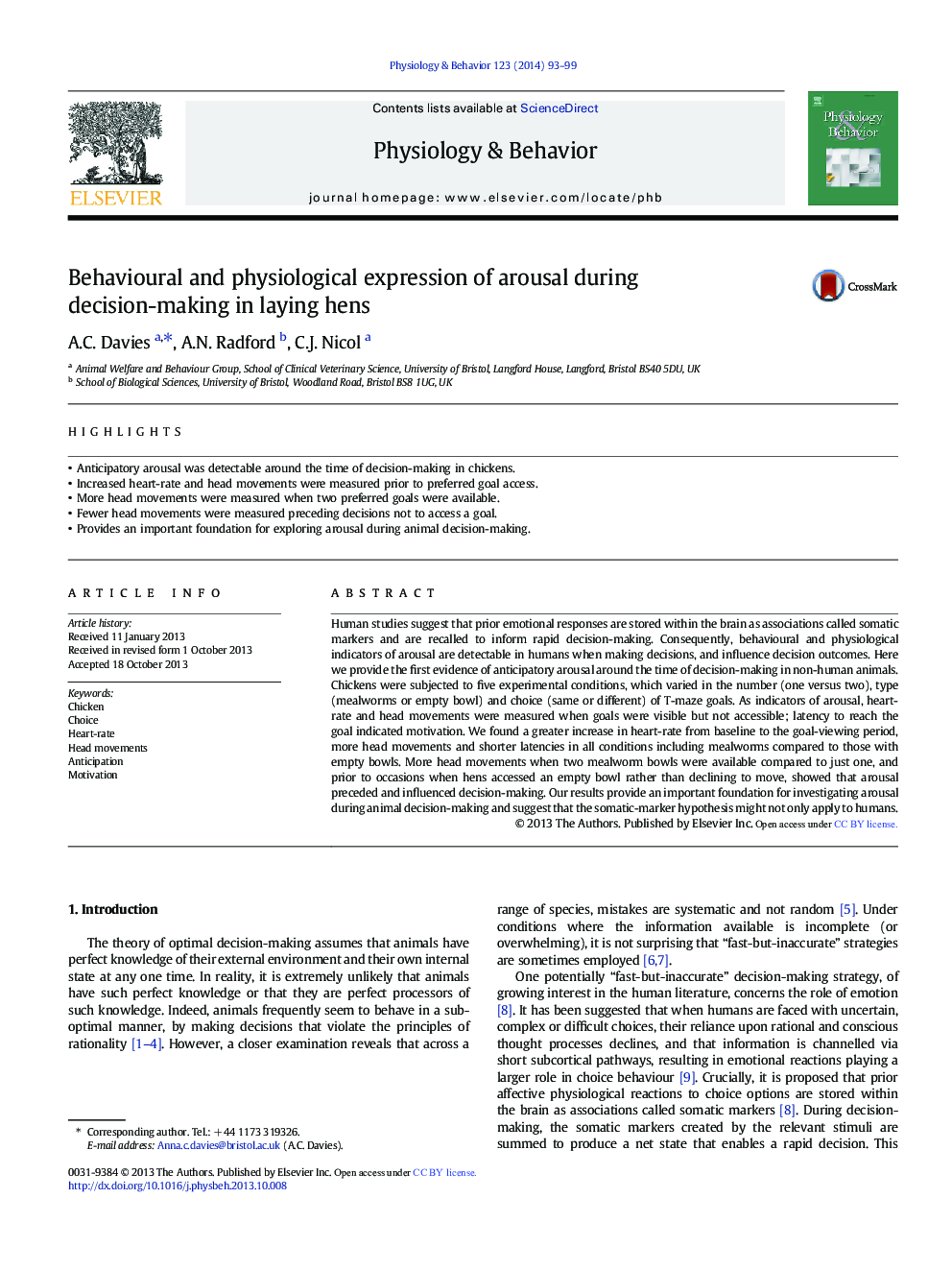| Article ID | Journal | Published Year | Pages | File Type |
|---|---|---|---|---|
| 5924555 | Physiology & Behavior | 2014 | 7 Pages |
â¢Anticipatory arousal was detectable around the time of decision-making in chickens.â¢Increased heart-rate and head movements were measured prior to preferred goal access.â¢More head movements were measured when two preferred goals were available.â¢Fewer head movements were measured preceding decisions not to access a goal.â¢Provides an important foundation for exploring arousal during animal decision-making.
Human studies suggest that prior emotional responses are stored within the brain as associations called somatic markers and are recalled to inform rapid decision-making. Consequently, behavioural and physiological indicators of arousal are detectable in humans when making decisions, and influence decision outcomes. Here we provide the first evidence of anticipatory arousal around the time of decision-making in non-human animals. Chickens were subjected to five experimental conditions, which varied in the number (one versus two), type (mealworms or empty bowl) and choice (same or different) of T-maze goals. As indicators of arousal, heart-rate and head movements were measured when goals were visible but not accessible; latency to reach the goal indicated motivation. We found a greater increase in heart-rate from baseline to the goal-viewing period, more head movements and shorter latencies in all conditions including mealworms compared to those with empty bowls. More head movements when two mealworm bowls were available compared to just one, and prior to occasions when hens accessed an empty bowl rather than declining to move, showed that arousal preceded and influenced decision-making. Our results provide an important foundation for investigating arousal during animal decision-making and suggest that the somatic-marker hypothesis might not only apply to humans.
